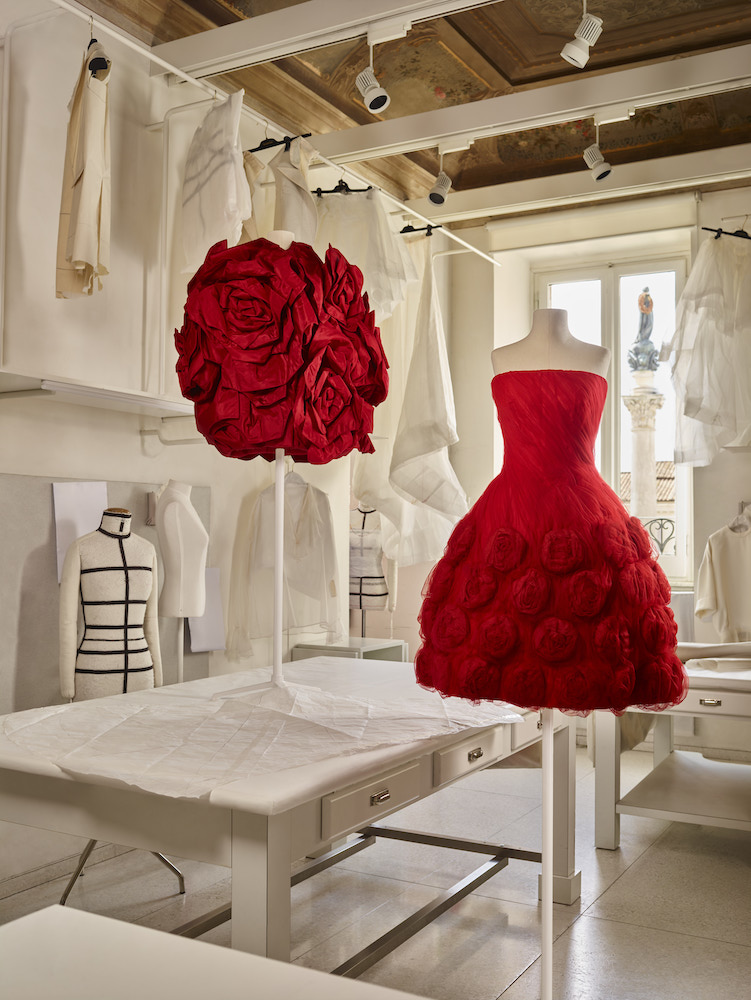This fall, “Forever – Valentino” opens at M7 in Doha, Qatar, developed by Maison Valentino in collaboration with Qatar Museums. The major exhibition, suitably described as a “perspective,” rather than a “retrospective,” shares the creative language, experience, and vision of the storied maison. Intimate engagements with the codes of Valentino will offer visitors a chance to discover the past, present, and future of the iconic house, as told by its founder Valentino Garavani and current Creative Director Pierpaolo Piccioli.
On view from October 28, 2022, through April 1, 2023, “Forever – Valentino” coincides with Mr. Valentino’s 90th birthday, as well as Qatar Museums’s year-long “Qatar Creates” programming. Over 200 couture and ready-to-wear garments will be presented in a series of galleries that take inspiration from Valentino’s roots and home in Rome. Interactive installations move from the headquarters at the Piazza Mignanelli to the fitting salons, from the ateliers to the archives, and from La Dolce Vita to the Valentino Pink-out.
The immersive show is curated by Artistic Director of the New Museum in New York Massimiliano Gioni and fashion critic and author Alexander Fury. Ahead of the opening next month in Doha, Whitewall spoke with Gioni about working closely with Piccioli and Fury to create a fashion experience that captures the heart and spirit of the making of Valentino.
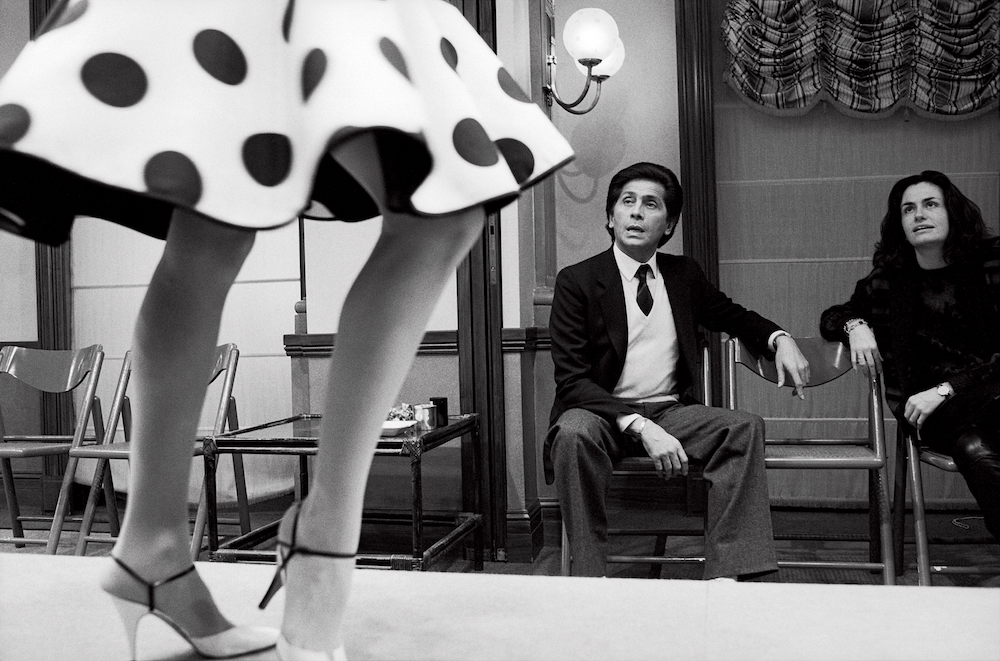
Mr. Valentino Garavani and Georgina Brandolini during the rehearsal of the Haute Couture Spring/Summer 1983 collection, photo By Mauro Galligani.
WHITEWALL: As a curator of contemporary art, what made you interested in curating a fashion exhibition?
MASSIMILIANO GIONI: It is my first solo fashion show. I started my curatorial career in a series of exhibitions in which I was assistant curator to Francesco Bonami in Florence, which combined fashion and art. Of course, being Italian, you kind of grow up with the dialogue of fashion and art. But this was the first time that I was approached to curate a straight fashion show. I liked the challenge. I liked the opportunity. The very influential curator Germano Celant famously did the Armani show at the Guggenheim. So I thought, if he did it, I can do it.
It was also quite special because it was Valentino, it was Pierpaolo, and Alex Fury, who is a professional in the industry. I had this great opportunity to work with fashion, but with accomplices who knew much more about fashion, and in a space that is open to experimentation.
WW: How did the conversation with Valentino begin?
MG: The show evolved from a series of dialogues. I had a few conversations with Alex at the beginning and a few conversations with Pierpaolo. The specific choices of the clothes were very much in the hands of Alex and Pierpaolo. I felt reassured that they didn’t have to count on my sartorial decisions. My role was really to think of an overarching narrative and the conception of the show in terms of its big picture.
I always say that if in the process of making a show, I learn something, then the show works because the viewer will have a similar learning experience. I thought this was an opportunity to try and do something that I haven’t done, and to try and do something that would allow plenty of room for learning and presenting different materials in ways that are new.
It is first and foremost a tribute to Mr. Valentino himself. We stayed very close to the subject and close to fashion. A question that we asked a lot, and we hope we have addressed, was how to present fashion in ways that are true to the garments and the work that goes into them. And at the same time, to think of fashion as a much more complex language that includes photography, video, and all the ways it is experienced.
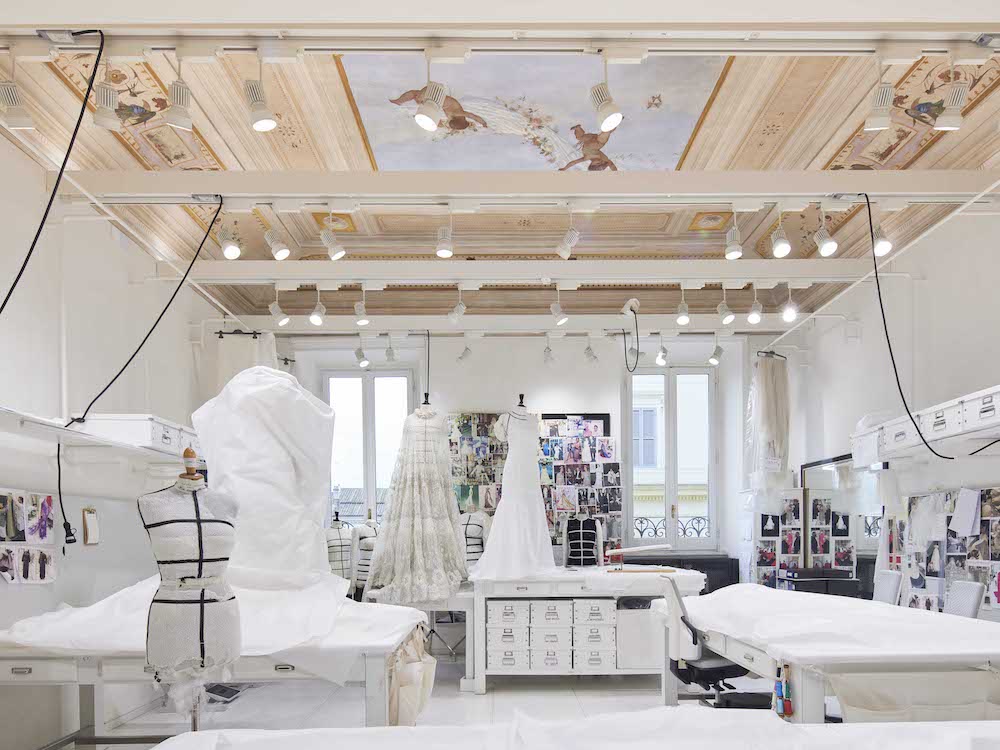
Courtesy of Valentino.
WW: How did you arrive at the lens of the city of Rome through which to view Valentino’s past, present, and future?
MG: Mr. Valentino is not from Rome, but he adopted Rome early on as a kind of mythical focus for all his work. He also chose it at a moment when Rome was far from being the capital of fashion. When he began in the late 50s, the fashion industry was in Florence. The choice of going to Rome was somewhat unconventional and loaded with myths and ideas. It’s the years of La Dolce Vita, the years of Cinecittà film studios.
To this day, the headquarters of Valentino is in Rome. Pierpaolo goes to work in Rome every single day. On the other hand, he’s imagining Rome in very different ways. From ‘59 to when Pierpaolo became the sole creative director, the maison is rooted in certain ideas of exclusivity and grandeur. Pierpaolo was very enthusiastic about the idea of taking Rome as a starting point, but it’s not a stereotypical or touristic view of Rome. Rome is not fictional, it is a place where people live, and specifically where the people that make the clothes in the atelier live. He wanted to reflect that authenticity in the show.
One distinguishing element in Pierpaolo’s work has been what he calls a “re-codifying” of the history of Valentino. He continues to inhabit that history, the archive, and to think of ways in which to transform it and keep it alive—not confine it to a mythical past. In that same way, he sees Rome as a lived experience. He has ideas about Rome as a place of more cosmopolitan views and of coexistence, which has been important to him, personally and creatively.
There were two elements that drove our conception of the show. One was Rome— certain typologies of the city like the palazzo and this idea of the capriccio as a montage mechanism. On the other hand, this show is an opportunity to enter the creative spaces of Palazzo Mignanelli and bring the viewers very close to where the clothes are made and where the creative process develops.
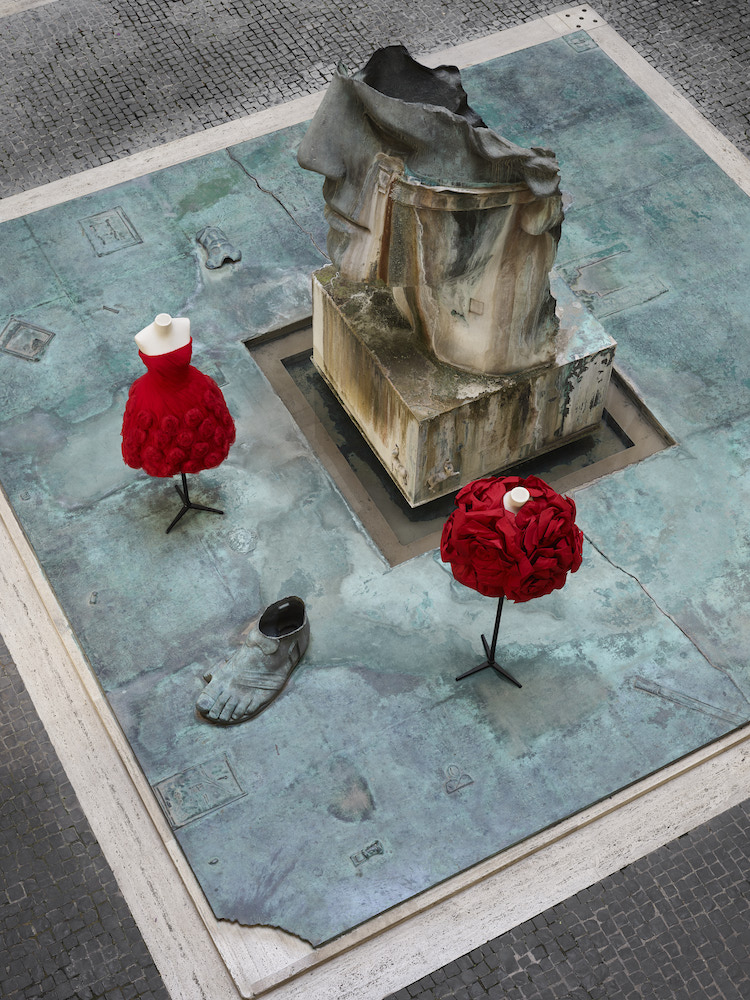
Courtesy of Valentino.
WW: How did you want to open the exhibition?
MG: It is a reconstruction of the courtyard of Palazzo Mignanelli. In Rome, there is a large bronze sculpture by Igor Mitoraj and it will be replicated here in the middle of this courtyard with the use of multimedia projections onto the ceiling to reconstruct the sky of Rome. We open with a bang, with a series of red dresses—red being the color of the maison. It is a majority of Valentino Garavani’s own ensembles, but they also cover the entire history of the maison. They include creations by Pierpaolo, Alessandra Facchinetti, and by the collaboration of Maria Grazia Chiuri and Pierpaolo when they were both creative directors. It’s the typology, central to the architecture in Rome, and it’s also a very theatrical way to begin the presentation. Then the show alternates between larger, similar presentations to more intimate presentations.
WW: How did you want to translate the experience of the atelier to the viewer?
MG: There are a series of rooms that focus on the creative spaces of the Palazzo, and more particularly the fitting room. This is the room where Mr. Valentino used to work and where Pierpaolo now works. It’s a place where clothes and ideas take shape, and it’s recreated exactly one-to-one, somewhat abstracted through the use of white. There will be sketches by Mr. Valentino, particularly from his very first collection. There will be only two pieces of clothing, one being the legendary Fiesta dress, which is one of Valentino’s first dresses from the first presentation. And just opposite is a re-interpretation by Pierpaolo.
We really wanted to take viewers behind the scenes and very close to the manufacturing of clothes, which is so important. It has proximity to the manufacturing and to the clothes, which is very unusual. That’s what defines couture, in a sense. Couture is not exactly a playground for the masses, even though clearly through the media it speaks to millions of people. The experience of couture is an experience of proximity, and proximity even to bodies. People who acquire couture Valentino have their own mannequins in Rome so that everything can be customized. We try to really show this experience of customization, proximity, and care. So, in one room, you’ll have all the tools that are actually used to imagine clothes.
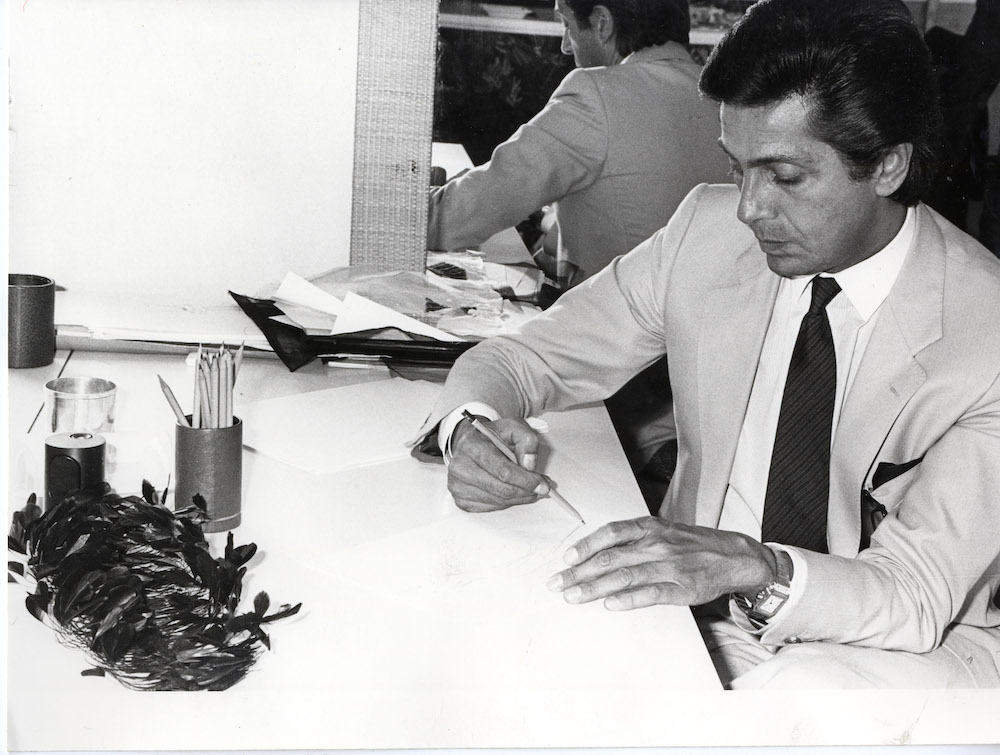
Mr. Valentino Garavani in his office.
WW: How did you want that creative process behind imagining the clothes to be conveyed?
MG: One room looks more specifically at the creative process in Pierpaolo’s work. It’s the first time that Pierpaolo has granted access to these documents. For each collection, Pierpaolo makes these books, these kinds of source materials, or books of inspiration. They are quite beautiful. They have something of a Joseph Cornell quality. They are very dreamy, cut-and-pasted. They might contain a piece of fabric and a photograph of an artwork that inspired him. Usually, they are just tools for him and the team to work with. This time, however, we are displaying one entire book. It will be in dialogue with specific pieces that were created through this process. It’s a very unusual opportunity to look at the creative process and to see also the various uses of materials.
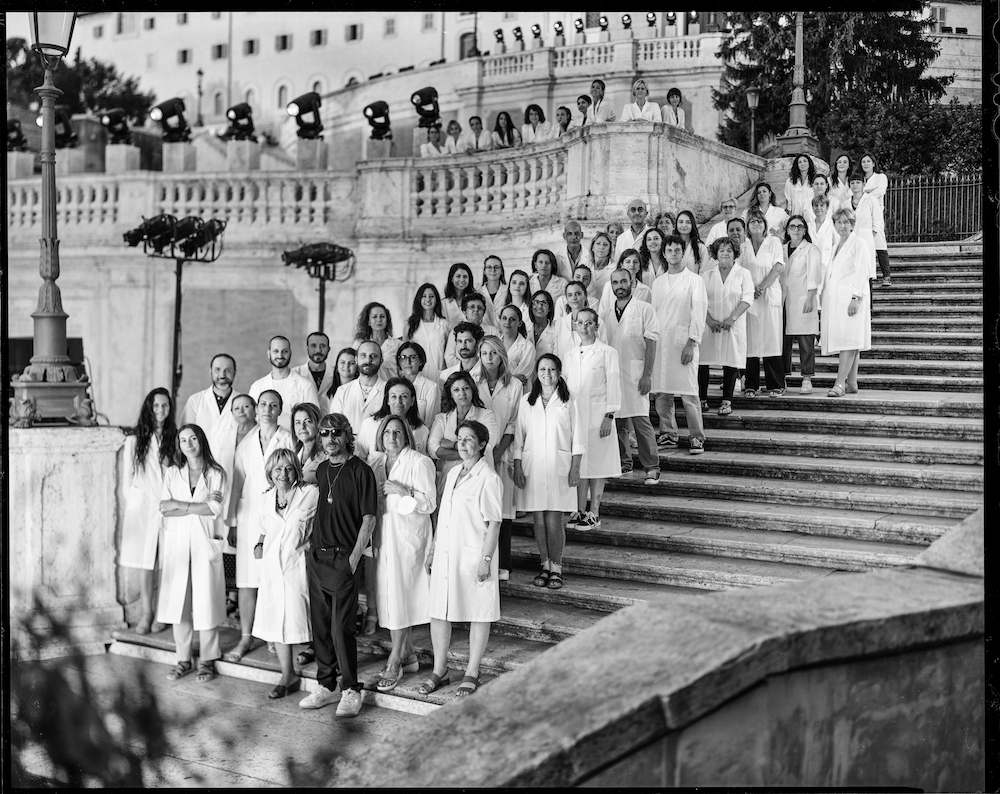
Valentino’s “The Beginning,” the haute couture fall/winter 2022-23 collection.
WW: What note will viewers leave on? What did you envision for the final act?
MG: The grand finale references the Piazza di Spagna in Rome. There are more than 60 pieces, throughout Valentino’s history, cascading in on this recreation of the Spanish Steps in varied colors and forms. Behind the steps is a small cinema with a series of screens where you see fashion in its multimedia incarnation.
The show gives you a glimpse of the continuous shift between interior and exterior. I always say that if there is one city where Rome could be built in a day, it is probably Doha, focusing on the future while also coming to terms with its own history. We wanted the show to feel contemporary, to feel alive.
WW: It sounds like the show moves from very intimate to a very grand scale. It’s interesting to think about the garment as an object that is simultaneously worn on a body, that’s also in a show, then a photograph, and can also live on in our collective memory.
MG: So much of fashion is about the construction of the self. Pierpaolo is very aware of that—if you look at his campaigns, his shows, in the choice of collaboration with models, and the variety of testimonials that he chooses. It can be liberating if you think of fashion as a tool through which identity is built. Fashion becomes the tool for constructing or deconstructing the self. I think Pierpaolo is very aware of that, in his choices, the way he talks, even in the ethical dimension of it.
WW: And it’s done with care and love for the people that it reaches. It doesn’t feel cynical. There’s joy and reverence there.
MG: If you go to the Palazzo, the interaction with all the people that come together to make clothes is quite significant. He has put that at the center of his work.
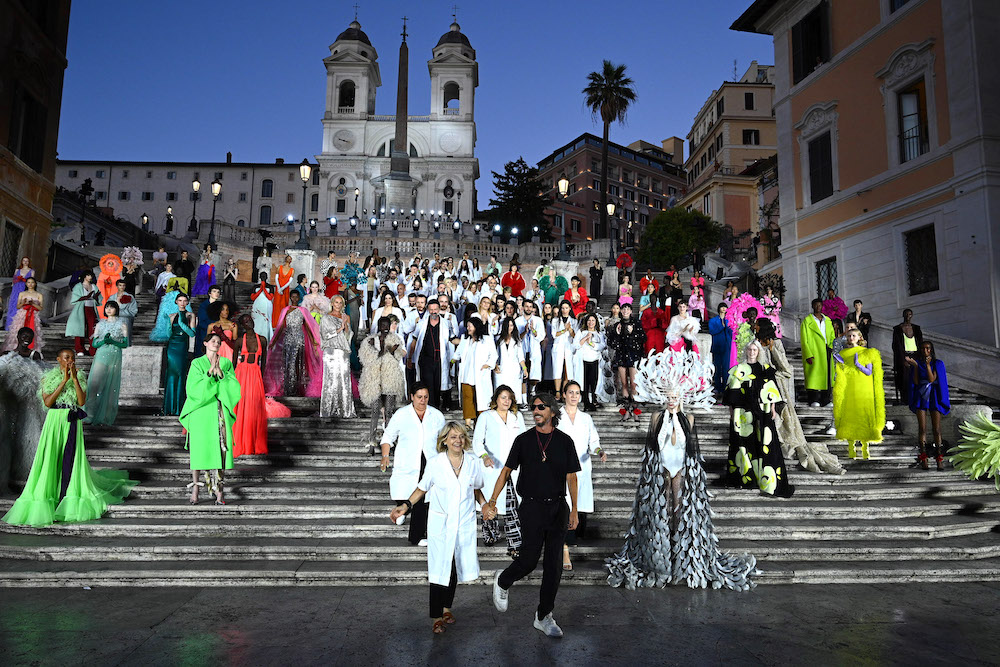
Valentino’s “The Beginning,” the haute couture fall/winter 2022-23 collection.


